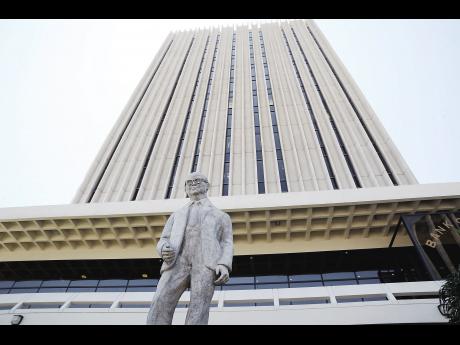BOJ explains reasons for pulling ‘red money’
The Bank of Jamaica (BOJ) has announced that it will soon demonetise the one, 10, and 25 cent coins.
This means that the BOJ will no longer have these denominations made, and that after a certain time, these coins will no longer be legal tender and the bank will no longer issue them to the public.
Importantly, however, even after these coins are no longer legal tender for transactions, the BOJ will indefinitely continue to redeem them for face value.
What this means is that there will soon be no more cents in circulation, and so the one dollar coin will become the lowest coin denomination, while the total range of coin denominations left - all in dollars - will be the one, five, 10, and 20 dollar coins.
HOW WILL THIS AFFECT CONSUMERS?
Importantly, this change will only affect cash transactions, and so all electronic transactions will continue as usual.
What should happen in cash transactions is that there should be a simple system of rounding up and rounding down to the nearest dollar. A loss on one side should be compensated for with a gain on the other, and so the net effect, including any possible effect on inflation, should be negligible.
Transactions ending in one to 49 cents should be rounded down to the nearest dollar, so an item costing $40.49 should be rounded down to $40. At the other end, transactions ending up in 50 to 99 cents should be rounded up to the nearest dollar. Therefore, an item that cost $40.50 should then be rounded up to $41.
WHAT IS THE INTENDED TIMELINE?
Now that BOJ has obtained ministerial approval, the next step, in keeping with the stipulations of the Bank of Jamaica Act (Section 16(1)), is for the measure to be soon gazetted, at which time three months' notice will be provided.
The bank will make another announcement when the precise date is finalised, but at this point we expect formal demonetisation to occur early in the first quarter of 2018.
WHY ARE WE WITHDRAWING
THESE COINS?
There are two primary considerations.
First, and most important, is the extent to which these coins are still being used, and second is if they are still cost-effective to manufacture.
DEMAND
A review by the bank indicates that between 2005 and 2016, there was a drastic decline in the use of these specific coins. As a proportion of the demand for all coins in circulation, demand for the 25 cent declined from 11.1 to 1.6 per cent over the period, while demand for the 10 cent declined from 14.2 to two per cent. Significantly, the demand for the one cent coin over the period was almost zero.
REDEMPTION
Ideally, all notes and coins should eventually end up back at the central bank after circulating through the financial and commercial system, at which point damaged ones are removed and replaced with new ones, and together with those in good condition, all are returned to the system.
The process of returning notes and coins to BOJ is called redemption, and the redemption of the coins in question has been in significant decline as well, indicating that they are 'lost in circulation' and are just lying around not being used.
There is a problem with coin redemption in general, but it is much worse with these three coins in particular. Of what is in circulation, the average redemption rates of the 10 and 25 cent coins are at 16 per cent, compared to a 52 per cent redemption rate for higher coin denominations.
COST OF PRODUCTION
At current prices, it now costs more to make these coins than they are worth, and so continuing to make them is no longer economically viable and the country will save money by discontinuing them.
It costs J$1.73 to make a one cent coin, J$1.54 to make each 10 cent coin, and J$1.96 to manufacture each 25 cent coin. By contrast, it costs less than $3 to make each $5 and $10 coin, and less than $10 dollars to make the $20 coin.
THE ONE DOLLAR EXCEPTION
The one dollar coin is an exception in this analysis.
At a cost of J$2.30 per coin, it is no longer economically viable to make the current one dollar coin. However, demand for this coin remains heavy, amounting to almost 50 per cent of all coins in demand.
The Bank of Jamaica has no intention to withdraw such a heavily used denomination from circulation. But we also do not intend to keep producing a non-cost-effective coin. The solution the bank is already pursuing is to review the design of this coin with a view to using less-expensive materials to make it.
INTERNATIONAL PRECEDENT
Jamaica is not unique in this regard as several other countries across the world have already successfully taken similar measures.
OPPORTUNITY FOR CHARITY
As has been the case in New Zealand and Canada, this situation presents an opportunity for service clubs and other charitable organisations, as members of the public could, if they wish, turn these coins over to such organisations, who in turn can then redeem them at BOJ for cash, subject to the usual legal and statutory requirements.



